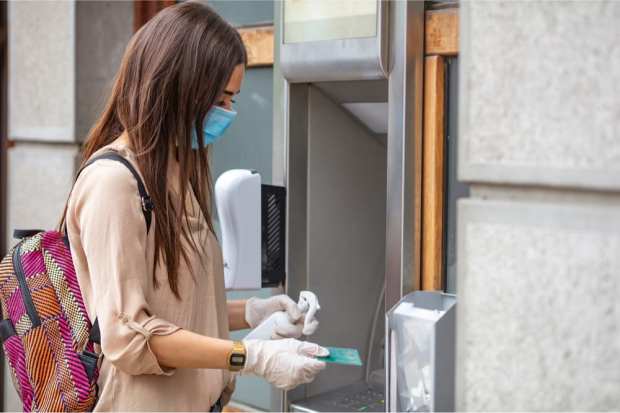Digital-First Banking Isn’t Touchy-Feely

“Haphephobia” is the fear of being touched, or of touching other things. Safe to say most people are now familiar with some form of this anxiety, as news reports keep frightening us with the notion that the coronavirus may lurk on any surface, ATM or point-of-sale (POS) terminal.
Fear was powerful enough to shut down most of the world for half the year so far. Of the new décor people will find as they come out from lockdown is next-gen banking hardware that is not only touchless, but that can do everything a physical branch does, and more still.
The Digital-First Banking Tracker® done in collaboration with NCR Corporation examines moves that financial institutions (FIs) are making now to put nervous Digital Shifters at ease with new experiences tailored to disarm pandemic-era paranoia.
“COVID-19 is affecting every step of the banking process, including ATMs. Keypads, touchscreens and other physical input methods are potential routes of infection, so banks are turning to contactless methods that interface with users’ smartphones instead. One such method is to have customers scan QR codes printed on the machines and then use their own phones to view account balances and request cash withdrawals, significantly reducing the amount of physical contact needed and driving down the risk of infection,” per the Tracker.
Ingenious uses of bank tech and mobile interfaces for better post-pandemic customer experiences comprise the heart of valuable insights for the latest Digital-First Banking Tracker®.
ITMs Go For Totally Touchless
Among the coolest innovations to come out of COVID is the Interactive Teller Machine (ITM), which makes very useful old workhorse ATMs obsolete with branch-like efficiency.
“There are more than 10 billion ATM transactions conducted in the U.S. every year, with the average ATM machine used 300 times a month,” the Tracker states. “This massive popularity is driving many digital-first banks to invest in more advanced interactive teller machines (ITMs), which connect customers with human tellers via videoconference and allow for more sophisticated banking activities beyond cash withdrawal, including card applications and account openings.”
Penetration of ITMs will be methodical, perhaps even slow at first, but like their older sibling the ATM, there’s little doubt the enhanced digital-first banking experience will catch on.
“To be agile and quickly implement new capabilities that offer both the convenience consumers crave and the security that’s required to keep their accounts secure, it comes down to technology and mindset,” Douglas Brown, senior vice president and general manager, NCR Corporation, told PYMNTS.
“For many financial institutions, this means adapting their culture, realigning their business strategies and reevaluating their technology and software to ensure lines of defense are structured and consistent,” Brown said.
Digital-First, With A Dose Of Reality
Even though ATMs and their touchscreens will eventually be replaced by fleets of digital-first ITMs, there’s plenty of life left in the current installed base of money machines.
“The ATM market is still growing, despite these security and COVID-19 concerns, with a recent report predicting the size of the global ATM managed services industry will reach $9.97 billion by 2027,” according to the latest Digital-First Banking Tracker®.
“This equals a significant increase from the market size of $6.11 billion in 2019, representing a compound annual growth rate (CAGR) of 6.5 percent between 2020 and 2027. Experts attribute this growth to a rise in global debit card usage as well as demand for advanced ATM services like account openings and video tellers.”
Even as that market grows, ITMs will continue their inexorable march toward eventual ubiquity in a post-pandemic world of neat, clean, contactless banking experiences.
